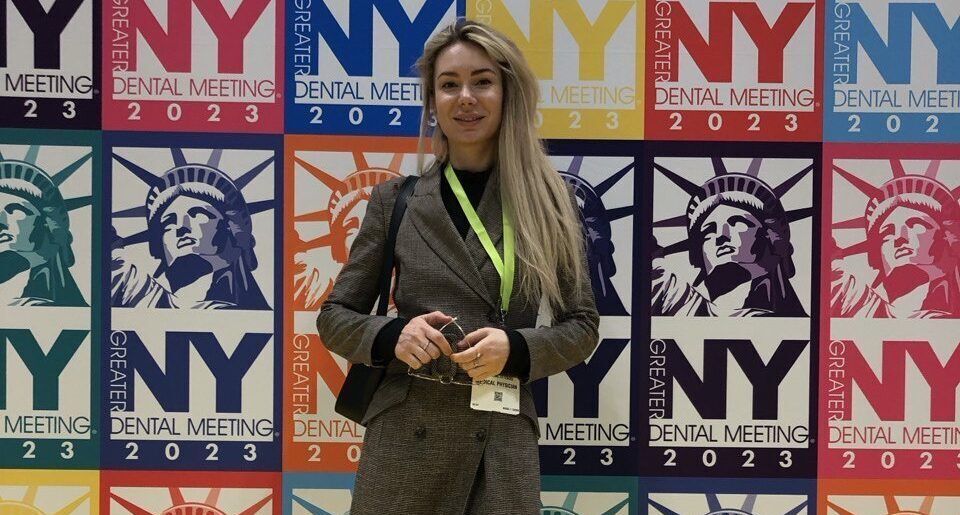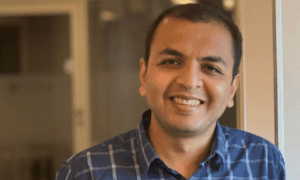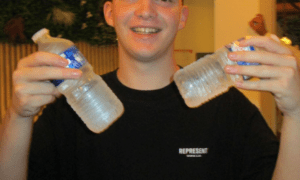Dr. Viktoriia Golova is a leading endodontist with nine years of experience specializing in microscopic and regenerative dentistry. Known for her patient-first approach and innovation in root canal therapy, she’s published scientific research and is a member of the American Association of Endodontists. Dr. Golova plans to revolutionize U.S. dentistry by launching a nationwide network of clinics focused on preserving natural teeth using advanced regenerative technologies. Her vision merges clinical excellence, cutting-edge tools like AI and 3D printing, and sustainable growth, positioning her at the forefront of a healthier, technology-driven future for dental care.
Please tell us more about yourself.
My name is Viktoriia Golova. I’m a proficient dentist with nine years of experience in microscopic dentistry. I specialize in endodontics, which involves root canal treatments, and I’ve developed my own unique approach to these procedures. I’ve also published scientific articles in medical journals and am a member of the American Association of Endodontists (AAE). In the future, I plan to open a network of dental clinics in the U.S., focused primarily on my view of modern techniques in regenerative dentistry, and preserving patients’ natural teeth. My professional credo is – Do not remove, keep your own teeth.
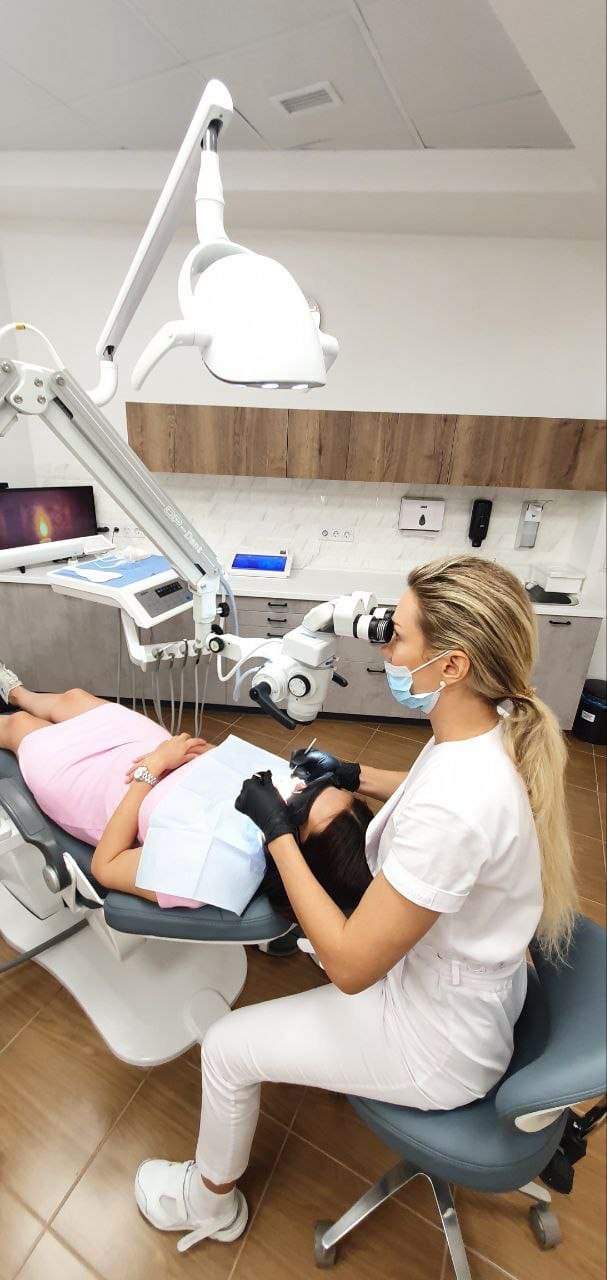
What is an endodontist, and how do you help patients save their teeth?
An endodontist is a dentist who specializes in saving teeth. We diagnose tooth pain, perform root canal treatments, and treat problems inside the tooth. I use high-powered microscopes to see even the smallest details, allowing me to carefully remove infected tissues from deep inside the tooth and thoroughly clean it out. This significantly reduces the chances of reinfection. Saving natural teeth is always my priority because it’s usually healthier and more beneficial in the long term. Endodontists like myself assess the patient’s situation and come up with the best possible plan to maintain their teeth for a lifetime. Modern technologies such as regenerative endodontics open up new possibilities for successfully preserving teeth alive.
How has integrating AI into diagnostics improved your practice, especially when interpreting panoramic X-rays?
Bringing AI into my dental practice has greatly improved diagnostic accuracy and efficiency, especially with panoramic radiographs. AI systems quickly analyze images, spotting tiny issues like early signs of infections, fractures, and unusual root canal shapes that the human eye might miss. These insights let us provide treatment earlier, improving patient outcomes. AI also speeds up the process, freeing up my time to focus more on clinical decisions and patient care. Additionally, it helps me customize treatment plans based on detailed data from individual patients. We’re still careful about limitations—such as the need for ongoing validation in real-world scenarios and ensuring ethical handling of patient data—but overall, AI is revolutionizing how we diagnose and treat dental issues.
With teledentistry on the rise, how do you maintain quality care and trust during virtual consultations?
Providing great care through teledentistry means focusing on clear communication, building trust, and leveraging technology effectively. I start each consultation with a casual conversation to help patients feel comfortable. I actively listen, encourage questions, and use visual aids and screen-sharing tools to clearly explain treatment plans. Privacy is a priority, so I reassure patients their information stays confidential. After each session, I follow up with a clear summary email outlining the next steps. If any misunderstandings or errors occur, I’m transparent and proactive about correcting them. By combining empathy, clear explanations, and user-friendly tech, I ensure my patients get personalized, high-quality care remotely.
Cosmetic dentistry is booming. How do you balance aesthetic demands with tooth health?
Balancing aesthetics with tooth health requires careful planning, education, and modern, minimally invasive techniques. First, I thoroughly assess each tooth’s condition before recommending cosmetic treatments like veneers or crowns, clearly explaining any risks or long-term considerations to the patient. I use minimally invasive methods such as lasers, clear aligners, and conservative restorations like inlays or onlays to preserve as much natural tooth structure as possible. Addressing underlying endodontic problems first, like infections or weak root canals, ensures cosmetic procedures won’t compromise overall tooth health. By working closely with cosmetic dentistry specialists and using high-quality materials, we achieve beautiful, healthy smiles that last.
3D printing is revolutionizing dental care. How have you incorporated it, and what benefits have you seen?
I’ve fully embraced 3D printing technology in my practice, and it’s provided amazing benefits. It allows us to quickly and precisely create customized dental appliances, such as aligners, surgical guides, and bridges, right in the office. Patients receive faster treatment since we no longer wait weeks for lab-made items. The precision of 3D-printed items ensures they fit perfectly, making treatments more comfortable and effective. Surgical planning is more accurate, leading to better outcomes, and over time, it’s cost-effective since it reduces lab fees and waste. Overall, 3D printing greatly improves patient satisfaction and treatment efficiency.
Dental hygiene is crucial today. What technologies and habits can help people maintain a healthy mouth?
Good oral hygiene involves consistent daily habits supported by modern tech. Using electric toothbrushes, water flossers, and mobile apps that remind you to brush and floss regularly are all helpful. Regular dental check-ups and digital imaging can catch issues early, preventing major problems later on. Ultimately, consistent daily care combined with routine professional cleanings is the best way to maintain good oral health.
How do you plan to sustainably grow your practice in this booming dental market?
To ensure sustainable growth, I prioritize personalized care, invest in cutting-edge technology, and offer a wide variety of dental services. Using advanced tools like AI diagnostics, CAD/CAM, intraoral scanners, and 3D printing helps deliver precise, efficient care. Offering cosmetic dentistry and teledentistry expands patient options, increasing convenience and appeal. Emphasizing preventative care and educating patients about routine maintenance helps reduce complex treatments later, lowering costs overall. Additionally, adopting eco-friendly practices and staying transparent with pricing resonates with patients and builds long-term loyalty.
Tooth regeneration research is advancing how might this impact your work in endodontics?
Regenerative endodontics has huge potential for my practice. Instead of just cleaning and sealing root canals, this approach uses stem cells and growth factors to help teeth regenerate living pulp tissue, enabling continued root development and stronger teeth. It could significantly reduce the risk of fractures and reinfections compared to traditional treatments. Although it’s complex and faces challenges such as ethical concerns and procedural standardization, advances like gene therapy and bioprinting could eventually transform how we restore damaged teeth.

Patients increasingly value technology. How do you stay ahead and meet their expectations?
Staying ahead means fully embracing digital dentistry, enhancing patient experiences, and consistently training staff. My practice focuses on providing convenient digital tools such as online booking, telehealth consultations, and clear communication. We actively seek patient feedback and adjust our approach accordingly. Regular staff training ensures everyone is comfortable with new technologies, allowing us to deliver efficient, personalized care. By continuously adopting the latest innovations and clearly communicating their benefits, we consistently meet and exceed patient expectations.
Why is it important to save a tooth rather than extract it?
There are four key reasons to always prioritize saving a tooth: safety, comfort, cost, and function. Root canal treatment has lower infection risks than extraction, which can spread bacteria. Root canals are also typically less painful and easier to recover from than pulling a tooth. Initially, extraction may seem cheaper, but replacements like implants or dentures add significant long-term costs. Finally, saving your natural tooth preserves your bite and prevents shifting, speech problems, and difficulty chewing, keeping your smile healthy and functional for life.
Tell us more about your plans to develop a network of dental clinics in the U.S. What makes your approach unique?
My vision for dentistry in the U.S. goes far beyond traditional practice. In addition to being a practicing endodontist, I’ve also served as the lead specialist in two high-tech dental startups, including Dr. Siemens, a clinic known for its advanced technological equipment and comprehensive range of services. There, I’ve worked extensively with a groundbreaking method that preserves the vitality of the tooth’s nerve – a regenerative endodontic technology that’s especially effective for complex anatomies, as well as for both pediatric and adult patients. I’ve dedicated the past nine years to refining this technique, and in 2025, I received a national award as “Best Expert in Dentistry” in recognition of my contribution.
In 2023, I was invited to speak at the New York Greater Dental Meeting – a major global event that gathers top endodontists from countries such as Israel, Brazil, and Italy. That invitation reflected the growing international interest in my work, and it was also a major step in building partnerships that now shape the next phase of my U.S. plans.
Following approval of my immigration petition, I’m ready to lead the expansion of this technology in the United States. By 2027, we’re launching clinical trials in collaboration with, one of the world’s most recognized hospitals. Once these trials are completed – expected by August 2027 – we plan to begin offering this revolutionary method commercially in the U.S.
What are your goals for this business expansion?
Our goal is to launch a nationwide network of advanced regenerative endodontic centers, beginning with flagship locations in New York and Florida. These clinics will offer cutting-edge treatment designed to save teeth alive, using biocompatible calcium-based materials that support nerve regeneration.
By 2031, we aim to introduce a first-of-its-kind robotic system for autonomous root canal cleaning and preparation. This technology will drastically reduce treatment times, enhance precision, and offer patients a safer and more affordable alternative to conventional therapies.
Additionally, I plan to launch a pilot manufacturing unit to produce high-performance calcium-based materials for live-tooth preservation. Once validated, this material will be scaled up to 2,000 units with rigorous quality standards. We expect to secure supply contracts with healthcare providers after demonstrating strong treatment results.
Our conservative revenue projections estimate $30 – 120 million in revenue by the end of 2030, with over 100 employees across our clinical and production operations.
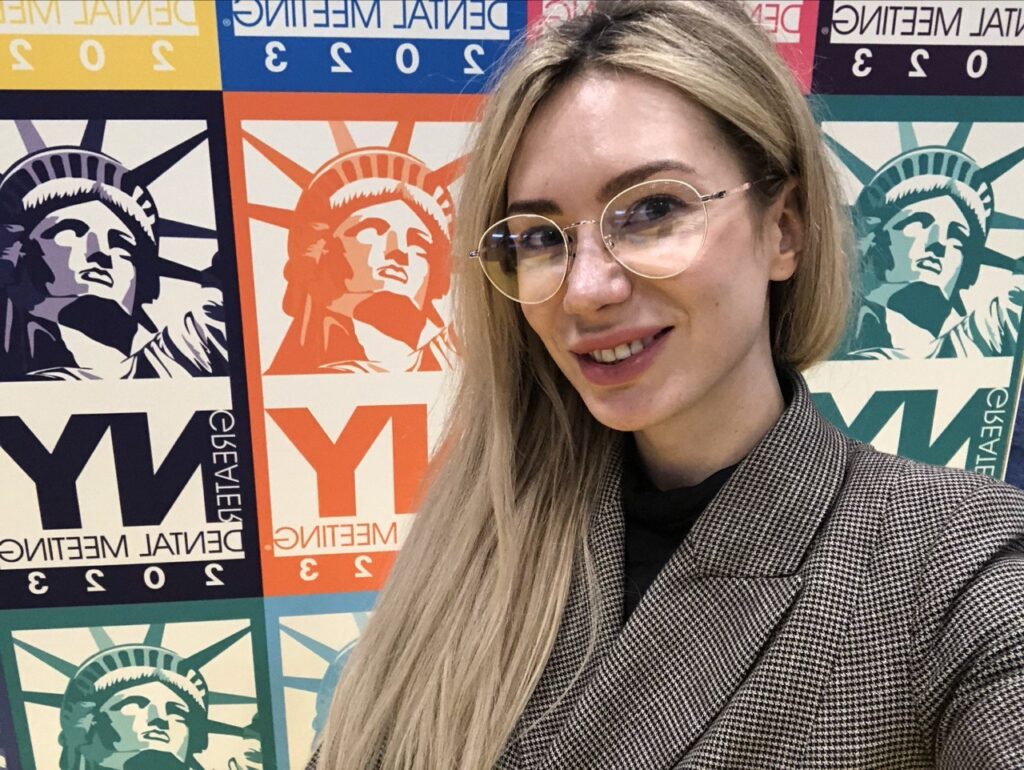
What makes your role essential in the success of this vision?
My deep clinical experience – combined with my leadership in R&D and strategic partnerships — uniquely positions me to oversee both the treatment model and the business operations. I’ve personally treated hundreds of cases using this method and will lead its adaptation for U.S. regulations and patient needs. My membership in the American Association of Endodontists gives me access to an elite professional network of innovators and investors in dental medicine, which will be essential for scaling this vision.
How will your work benefit the U.S. healthcare and economy?
Our project aligns with national goals in medical innovation, preventative healthcare, and economic development. By reducing the need for extractions and prosthetics, our treatments will help patients maintain long-term oral health at a lower cost. We’ll also contribute to U.S. leadership in biotechnology and dental R&D, creating skilled jobs in both the clinical and manufacturing sectors.
With growing demand for biologically based treatments and minimally invasive solutions, our initiative will enhance the competitiveness of American dentistry on the global stage – reinforcing the U.S. as a hub for health innovation. Through partnerships with American enterprises and medical institutions, I’m fully committed to building a model that brings measurable health, economic, and technological value to the country.

